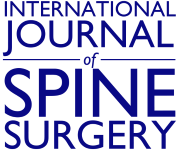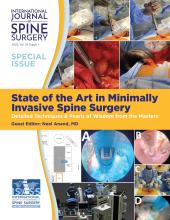ABSTRACT
Background There exists no large, multi-institutional analysis of patients undergoing cervical corpectomy for common degenerative spinal disease, including patient demographics and comorbidities as well as postoperative complications.
Methods Using Current Procedural Terminology and International Classification of Diseases codes, 1972 patients who underwent a cervical corpectomy for degenerative spinal disease were identified from the American College of Surgeons National Surgical Quality Improvement Program data sets from 2012 to 2015. A descriptive analysis of the patients who underwent the procedure as well as 30-day outcomes and adverse events were collected. Multivariate logistic regression models were used to determine the effect of any preoperative factors identified from a univariate logistic regression analysis (variables with P < .10) of complications.
Results The total complication rate, defined as major or minor adverse event, mortality, unplanned readmission, unplanned reoperation, or admission >30 days, was 13.28%. The percentage of patients who had ≥1 major or minor adverse events was 5.02%. Several factors commonly associated with an increased risk of perioperative complications, including smoking and diabetes, were found not to be independently associated with complications in this cohort.
Conclusions This study is the largest analysis of cervical corpectomies. The results of the multivariate analysis provide guidance on risk factors associated with perioperative complications. These data could help develop risk-appropriate strategies for minimizing the effects of certain preoperative factors on perioperative complications.
Footnotes
Disclosures and COI: There are no sources of funding or support for acknowledgement.
- ©International Society for the Advancement of Spine Surgery







